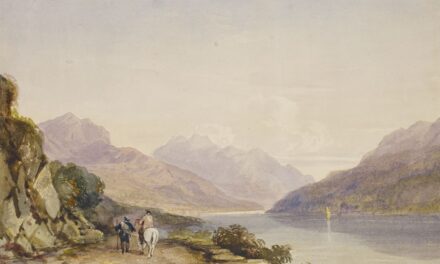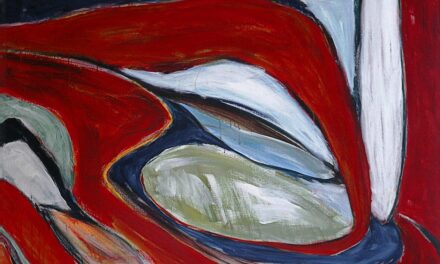Donald Judd was born on 3 June 1928 in Excelsior Springs, Missouri. He was raised in a family of bankers and property developers, which provided him with early exposure to the world of commerce and finance. Despite this background, Judd’s primary interest lay in the arts.
He pursued this passion by reading philosophy and art history at Columbia University in New York City. Following the completion of his undergraduate degree, Judd undertook a master’s degree in art history at the Art Institute of Chicago. It was during his time in Chicago that Judd began to develop his distinctive artistic style and philosophy, which would later be categorised as Minimalism.
Throughout his studies, Judd was significantly influenced by the works of Abstract Expressionist artists such as Jackson Pollock, Willem de Kooning, and Barnett Newman. He was also inspired by the writings of philosophers including David Hume and Immanuel Kant, whose ideas on perception and aesthetics would inform his artistic practice. Judd’s early education played a crucial role in shaping his artistic vision and establishing the foundation for the innovative work he would produce in his later career.
Summary
- Donald Judd was born in Missouri in 1928 and studied philosophy and art history at Columbia University.
- Judd was influenced by the work of artists such as Barnett Newman and David Smith, and his philosophies centred around the idea of creating art that was free from representation and expression.
- Judd’s sculptural works and installations were characterised by their use of industrial materials and geometric forms, often blurring the lines between art and architecture.
- Judd’s impact on the Minimalism movement was significant, as he sought to challenge traditional notions of art and space, influencing a generation of artists to follow.
- Judd’s legacy continues to influence contemporary art, with his emphasis on the relationship between art, space, and the viewer remaining a key aspect of his contribution to the art world.
Artistic Influences and Philosophies
Donald Judd’s artistic influences and philosophies were deeply rooted in the principles of Minimalism, a movement that emerged in the 1960s as a reaction against the emotionalism and gestural abstraction of Abstract Expressionism. Minimalist artists sought to create work that was stripped down to its essential elements, free from any extraneous or symbolic content. Judd’s own work reflected this ethos, as he sought to create art that was purely about form, material, and space.
Judd was also influenced by the ideas of phenomenology, a philosophical movement that emphasises the study of consciousness and the ways in which we perceive and experience the world. This interest in perception and experience is evident in Judd’s sculptural works, which often play with the viewer’s sense of space and scale. His use of industrial materials such as steel, plexiglass, and plywood further underscored his commitment to creating art that was free from any sense of preciousness or sentimentality.
Judd’s philosophies were also shaped by his interest in architecture and design, as well as his experiences living and working in urban environments such as New York City and Marfa, Texas. These influences can be seen in his use of modular forms, geometric shapes, and clean lines, which became hallmarks of his artistic style. Overall, Judd’s artistic influences and philosophies coalesced to form a body of work that was radical in its simplicity and rigor, setting him apart as a leading figure in the Minimalist movement.
Sculptural Works and Installations

Donald Judd is perhaps best known for his sculptural works and installations, which redefined the possibilities of three-dimensional art. His sculptures were characterised by their use of industrial materials such as steel, aluminium, and plexiglass, as well as their clean lines and geometric forms. Judd’s sculptures often took the form of modular units that could be arranged in various configurations, allowing for a dynamic interplay between form and space.
One of Judd’s most famous installations is his 100 untitled works in mill aluminium, which is permanently installed at the Chinati Foundation in Marfa, Texas. This large-scale installation consists of 100 aluminium boxes arranged in two former artillery sheds, creating a mesmerising interplay of light, shadow, and space. The installation exemplifies Judd’s commitment to creating art that is site-specific and engages with its surrounding environment.
In addition to his sculptural works, Judd also created a series of furniture designs that reflected his minimalist aesthetic. These designs were characterised by their simple yet elegant forms, as well as their use of industrial materials such as steel and plywood. Judd’s furniture designs were a natural extension of his sculptural practice, blurring the boundaries between art and design and challenging traditional notions of functionality and aesthetics.
Minimalism and Judd’s Impact on the Movement
Donald Judd played a pivotal role in shaping the Minimalist movement and pushing the boundaries of what art could be. His rejection of traditional artistic conventions and emphasis on materiality and space set him apart as a leading figure in the movement. Judd’s minimalist aesthetic was characterised by its emphasis on simplicity, clarity, and precision, as well as its rejection of any form of symbolism or narrative content.
Judd’s impact on Minimalism can be seen in his influential writings, such as his seminal essay “Specific Objects,” which articulated his vision for a new kind of art that was free from any sense of hierarchy or representation. In this essay, Judd argued for an art that was purely about form and materiality, devoid of any extraneous meaning or symbolism. This radical redefinition of art laid the groundwork for the Minimalist movement and inspired a new generation of artists to explore the possibilities of pure form and space.
Judd’s impact on Minimalism can also be seen in his role as a curator and advocate for other artists working in a similar vein. He was instrumental in promoting the work of fellow Minimalist artists such as Dan Flavin, Carl Andre, and Sol LeWitt, helping to establish Minimalism as a major force in contemporary art. Overall, Judd’s impact on the Minimalist movement was profound, shaping the course of art history and inspiring generations of artists to come.
Judd’s Legacy and Influence on Contemporary Art
Donald Judd’s legacy continues to loom large in the world of contemporary art, with his minimalist aesthetic and emphasis on materiality and space continuing to resonate with artists today. His influence can be seen in the work of contemporary artists such as Rachel Whiteread, Anish Kapoor, and Olafur Eliasson, who have all drawn inspiration from Judd’s radical redefinition of what art can be. Judd’s legacy is also evident in the continued relevance of his writings and critical essays, which continue to be studied and debated by scholars and artists alike.
His ideas about perception, materiality, and space have had a lasting impact on the field of art theory and continue to inform discussions about the nature of art and its relationship to the viewer. In addition to his influence on contemporary artists, Judd’s legacy is also evident in the numerous institutions dedicated to preserving and promoting his work. The Chinati Foundation in Marfa, Texas, which Judd founded in 1986, stands as a testament to his enduring impact on the art world.
The foundation houses a vast collection of Judd’s work, as well as that of other minimalist artists, and continues to serve as a hub for artistic experimentation and innovation.
Public Recognition and Exhibitions

A Global Reach
These exhibitions helped to solidify Judd’s reputation as a leading figure in the Minimalist movement and introduced his work to a global audience.
Accolades and Honours
In addition to his solo exhibitions, Judd also received numerous accolades and honours for his contributions to the art world. He was awarded prestigious grants such as the Guggenheim Fellowship and the National Endowment for the Arts Fellowship, which provided crucial support for his artistic practice.
A Lasting Legacy
Judd’s public recognition helped to elevate Minimalism to a position of prominence within the contemporary art world and cemented his status as a pioneering artist.
Personal Life and Contributions to the Art World
In addition to his artistic achievements, Donald Judd made significant contributions to the art world through his role as a curator, writer, and advocate for other artists. He curated several influential exhibitions that showcased the work of fellow Minimalist artists, helping to establish Minimalism as a major force in contemporary art. Judd also wrote extensively about art theory and criticism, publishing numerous essays that continue to be studied and debated by scholars today.
Judd’s personal life was marked by a commitment to artistic experimentation and innovation. He lived and worked in various urban environments such as New York City and Marfa, Texas, where he established studios that served as hubs for artistic collaboration and exchange. Judd’s dedication to creating art that engaged with its surrounding environment helped to redefine the possibilities of site-specific installation art and continues to inspire artists working today.
In conclusion, Donald Judd’s impact on the art world is undeniable. His minimalist aesthetic and emphasis on materiality and space continue to resonate with artists today, while his writings and critical essays remain essential reading for anyone interested in the nature of art. Judd’s legacy is evident in the numerous institutions dedicated to preserving and promoting his work, as well as in the continued relevance of his ideas about perception, materiality, and space.
Overall, Donald Judd’s contributions to contemporary art have had a lasting impact on the field and continue to inspire new generations of artists to push the boundaries of what art can be.
If you are interested in learning more about different art movements, you may also want to check out the article on Expressionism. This movement, which emerged in the early 20th century, focused on expressing emotions and inner feelings through art. It was a reaction against the perceived superficiality of the Impressionist movement and sought to convey the darker and more complex aspects of human experience. Understanding Expressionism can provide valuable context for appreciating the work of artists like Donald Judd and their contributions to the art world.
FAQs
Who is Donald Judd?
Donald Judd was an American artist, best known for his minimalist sculptures and installations. He was a leading figure in the Minimalist art movement of the 1960s and 1970s.
What is Minimalism in art?
Minimalism is a style of art that emerged in the 1960s, characterized by its simplicity and use of geometric shapes, often with an emphasis on industrial materials and processes.
What are some of Donald Judd’s most famous works?
Some of Donald Judd’s most famous works include his “stack” sculptures, which consist of identical units stacked on top of each other, as well as his large-scale installations in Marfa, Texas.
Where can I see Donald Judd’s work?
Donald Judd’s work can be found in major museums and galleries around the world, including the Museum of Modern Art in New York, Tate Modern in London, and the Chinati Foundation in Marfa, Texas.
What was Donald Judd’s influence on the art world?
Donald Judd’s minimalist approach to art had a significant impact on the art world, influencing a generation of artists and shaping the development of contemporary sculpture and installation art.




